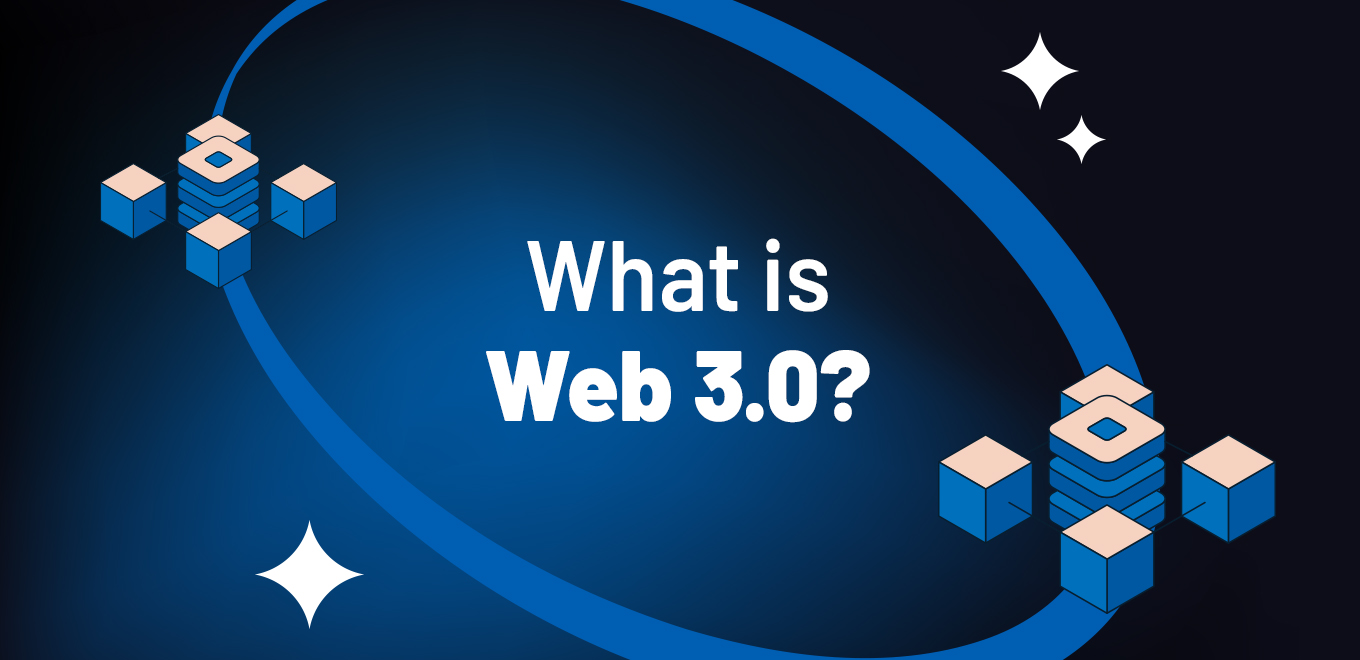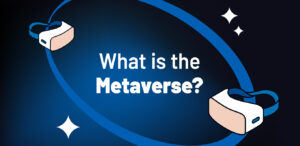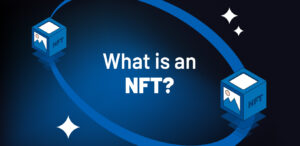With the growing interest in cryptocurrencies, the Web 3.0 technology, which was discussed in previous years, has started to gain popularity again. This technology focuses on transferring all control from centralized companies to the users, marking a shift from the internet that began with Web 1.0 in 1991, which was under the authority of central organizations. In this article, you will learn about Web 3.0 and how it differs from previous versions.
TABLE OF CONTENTS
What is Web 3.0?
Web 3.0 represents a decentralized, blockchain-based internet process. It focuses on establishing decentralized connections without the use of intermediaries. In Web 3.0, user data security is a top priority. It is an internet system where personal data is not shared by a central authority, and no profit is made from user data.
What is a Web3 Coin?
Web 3.0 is a technology based on decentralization. This leads to Web 3.0 and blockchain technology intersecting in a shared space. The use of decentralized applications (dApps) in Web 3.0, along with decentralized projects on the blockchain that align with Web 3.0 principles, causes these two technologies to interact continuously. This interaction has led to the emergence of many Web3 coin initiatives.
How Does Web 3.0 Differ from Web 1.0 and Web 2.0?
In Web 1.0, data was presented to users in a fixed manner by developers. During this period, users were passive content consumers. In Web 2.0, however, this shifted, and the focus moved towards personalized data sharing. Web 2.0 represents the era when the internet became interactive, and users transformed into content creators. Both of these internet eras involve centralized control points, where interactions occur within a system that monitors users and data.
Web 3.0 refers to a decentralized version of the internet. The applications in Web 3.0 differ from those in Web 2.0. In Web 3.0, the goal is to enable interaction between decentralized applications and users. With Web 3.0, the internet network adopts a decentralized structure. The inability of private companies to collect data and the fact that the current internet network cannot be controlled by a central authority form the core vision of Web 3.0.
What Are the Coins Associated with Web 3.0?
Users can select the Web 3.0 category on BtcTurk | Global and execute buy and sell transactions with Web3 coins operating in this space. The following list of Web 3.0 coins can be used to get an idea of the initiatives in this area and to explore them in more detail.
Ankr (ANKR)
Ankr provides an infrastructure that allows the shared use of system resources to offer easy setup and cost-effective solutions for blockchain hosting. It serves corporate companies, software developers, and blockchain enthusiasts with hosting services at much lower costs than traditional hosting solutions.
Audius (AUDIO)
Audius is a decentralized music streaming platform that bridges the gap between fans and musicians. The most-played songs and music playlists on the platform are rewarded with the platform’s cryptocurrency, AUDIO.
Basic Attention Token (BAT)
Basic Attention Token (BAT) is the digital asset of a blockchain-based digital advertising platform. Through the Brave web browser, it offers advertisers targeted ad options with higher engagement, while providing users with the opportunity to earn income from ads tailored to their interests, without compromising their privacy.
Polkadot (DOT)
Polkadot is a next-generation web protocol designed for scalability, interoperability, and security. It is supported by the Switzerland-based Web3 Foundation. The Polkadot network enables cross-chain data transfer by connecting blockchains, allowing decentralized applications (dApps) to receive data from open, semi-open, or private blockchains that operate independently of each other.
Fetch.ai (FET)
Fetch.ai (FET) is an artificial intelligence (AI)-focused project for blockchains. It provides AI-powered smart infrastructure to the decentralized digital economy, functioning as an open-access, decentralized machine learning network. By connecting artificial intelligence technology, which enables devices to communicate with each other (Internet of Things or IoT), with blockchain-based algorithms, Fetch.ai aims to enhance machine learning.
Filecoin (FIL)
Filecoin (FIL) is a decentralized file storage system that utilizes the IPFS (Interplanetary File System) protocol, allowing data to be accessible from multiple locations. The project offers a cost-effective and reliable storage option for users by efficiently utilizing the unused storage space of devices connected to the network.
Golem (GLM)
The Golem network, with its cutting-edge architecture, allows project developers to create more innovative projects. Users can share their unused computing power with those who need it. In return for this sharing, users can earn GLM as payment. The Golem network is built on top of Ethereum’s second layer.
The Graph (GRT)
The Graph (GRT) is an indexing protocol for querying data on Ethereum and similar networks. It provides APIs to deliver data for decentralized finance (DeFi) and Web3 applications. Anyone in need of publicly accessible data can create and publish open APIs known as Subgraphs. The Graph protocol currently indexes data on the Ethereum blockchain and the decentralized file storage system IPFS (InterPlanetary File System).
Chainlink (LINK)
Chainlink is a decentralized oracle network designed to provide external data connections to smart contracts. This enables data not native to the blockchain to be securely and verifiably integrated into smart contracts. Chainlink acts as a reliable decentralized connection between smart contracts and external data sources through APIs (Application Programming Interfaces), ensuring trust and accuracy in the process.
NuCypher (NU)
NuCypher provides a decentralized encryption service that offers encryption, access control, and key management systems for public blockchains. It enables end-to-end encrypted data sharing for blockchains and decentralized file storage solutions, ensuring privacy and security in the data exchange process.
Storj (STORJ)
Storj is a blockchain-based, open-source cloud storage system that enables secure and cost-effective decentralized data storage. Unlike traditional cloud storage, where files are stored on central servers, Storj splits files into encrypted pieces and distributes them across a global decentralized network. This approach ensures enhanced privacy and security, while reducing costs associated with centralized storage solutions.
Stacks (STX)
Stacks is a blockchain project designed to bring programmability, decentralized applications (dApps), and smart contracts to Bitcoin, aiming to create a better internet built on the security and decentralization of the Bitcoin blockchain. Originally launched as Blockstack in 2017, the project became the first cryptocurrency to receive approval from the U.S. Securities and Exchange Commission (SEC) for raising investment. Stacks aims to enhance Bitcoin’s capabilities by enabling the development of sophisticated applications while maintaining Bitcoin’s security and decentralization.
API3 (API3)
API3 is a decentralized project that aims to enable API data providers to transmit data directly to smart contracts without the need for third-party intermediaries. This is achieved through decentralized APIs, or dAPIs, which are first-party oracle networks that natively operate on the blockchain. In this model, API providers run their own Airnodes, eliminating the need for external oracle services. API3 seeks to create a more decentralized environment by offering a more secure, efficient, and transparent solution compared to traditional third-party oracles. This approach enhances data integrity and ensures greater control for API providers.
Aptos (APT)
Aptos is a blockchain designed to address several key challenges in decentralized applications (dApps), such as high costs, low efficiency, interruptions, and security concerns that arise with uncontrolled growth in blockchain networks. Aptos emphasizes scalability, security, reliability, and upgradability as its core principles. The blockchain was developed by a team of approximately 350 developers worldwide since 2019. Aptos seeks to provide a more efficient and secure platform for decentralized applications, aiming to improve the overall performance and user experience within the blockchain ecosystem.
Arpa (ARPA)
Arpa is a privacy-preserving computation network designed to separate data usage from ownership. The Arpa network claims to facilitate the separation of data usage from ownership. It enables data rental, allowing developers to create decentralized applications (dApps) on the Arpa network.
Band Protocol (BAND)
Band Protocol enables the integration of real-world data into blockchains. It enhances smart contract functionalities by providing access to reliable data without the need for a central authority. Band Protocol is designed to address the limitation of blockchains not being able to access real-world data, and to facilitate the distribution of real-world data to blockchains.
Cartesi (CTSI)
Cartesi simplifies the development of scalable smart contracts and decentralized applications. It allows software developers to use familiar programming languages within the blockchain environment. With Cartesi, decentralized applications can be developed across multiple blockchains.
Civic (CVC)
Civic aims to provide users with a more secure, cost-effective, and high-quality identity verification process. With Civic, users’ personal information can be verified and securely shared with service providers. The Civic platform claims to store all user data within mobile devices. Users who wish to share their personal data can grant permission by signing on the Civic platform.
Flow (FLOW)
Flow is a Layer 1 solution that provides a digital infrastructure for developers building next-generation games and applications. It enables the creation of applications on the Flow network. The Flow ecosystem collaborates with numerous partners, including globally recognized brands such as Warner Music, Ubisoft, NBA, and UFC, which are part of the Flow ecosystem.
Holochain (HOT)
Holo (HOT) enables the use of Holochain technology instead of blockchain for the development of decentralized applications. The project aims to create a marketplace where decentralized applications are more easily accessible. Holo seeks to serve as a bridge between decentralized applications and users. The Holo network works with servers that provide storage and computational power for decentralized applications built using Holochain.
JasmyCoin (JASMY)
Jasmy aims to create an infrastructure that allows users to process their data easily and securely. The project seeks to provide an environment for data exchange between devices such as computers and smartphones, as well as decentralized protocols. On the Jasmy platform, data can be transformed into personal assets. The platform claims to enable all users to manage their personal data.



